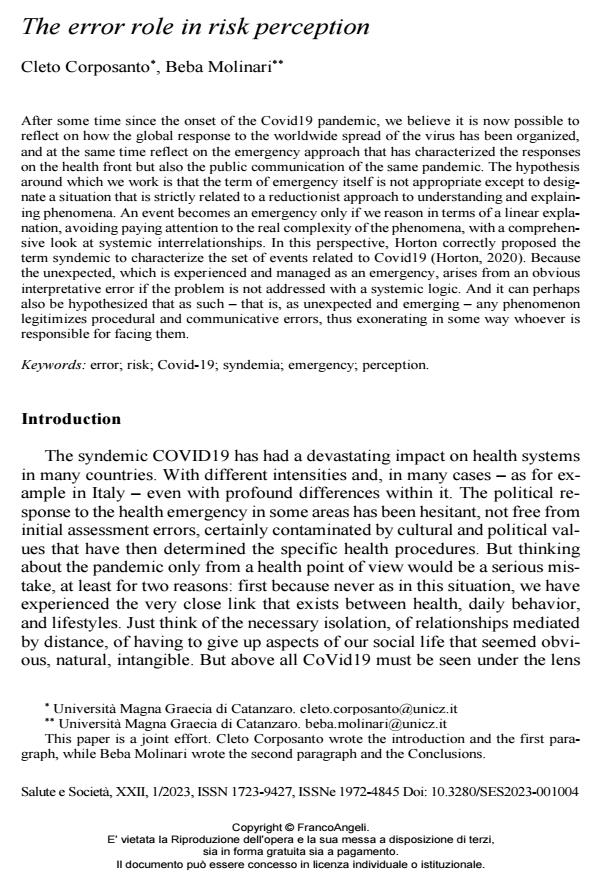The error role in risk perception
Titolo Rivista SALUTE E SOCIETÀ
Autori/Curatori Cleto Corposanto, Beba Molinari
Anno di pubblicazione 2023 Fascicolo 2023/1
Lingua Inglese Numero pagine 13 P. 45-57 Dimensione file 397 KB
DOI 10.3280/SES2023-001004
Il DOI è il codice a barre della proprietà intellettuale: per saperne di più
clicca qui
Qui sotto puoi vedere in anteprima la prima pagina di questo articolo.
Se questo articolo ti interessa, lo puoi acquistare (e scaricare in formato pdf) seguendo le facili indicazioni per acquistare il download credit. Acquista Download Credits per scaricare questo Articolo in formato PDF

FrancoAngeli è membro della Publishers International Linking Association, Inc (PILA)associazione indipendente e non profit per facilitare (attraverso i servizi tecnologici implementati da CrossRef.org) l’accesso degli studiosi ai contenuti digitali nelle pubblicazioni professionali e scientifiche
After some time since the onset of the Covid19 pandemic, we believe it is now possible to reflect on how the global response to the worldwide spread of the virus has been organized, and at the same time reflect on the emergency approach that has characterized the responses on the health front but also the public communication of the same pandemic. The hypothesis around which we work is that the term of emergency itself is not appropriate except to designate a sit-uation that is strictly related to a reductionist approach to understanding and explaining phenomena. An event becomes an emergency only if we reason in terms of a linear explanation, avoiding paying attention to the real complexity of the phenomena, with a comprehensive look at systemic interrelationships. In this perspective, Horton correctly proposed the term syndemic to characterize the set of events related to Covid19 (Horton, 2020). Because the unexpected, which is experienced and managed as an emergency, arises from an obvious interpretative error if the problem is not addressed with a systemic logic. And it can perhaps also be hypothe-sized that as such - that is, as unexpected and emerging - any phenomenon legitimizes proce-dural and communicative errors, thus exonerating in some way whoever is responsible for facing them.
Parole chiave:error; risk; Covid-19; syndemia; emergency; perception.
Cleto Corposanto, Beba Molinari, The error role in risk perception in "SALUTE E SOCIETÀ" 1/2023, pp 45-57, DOI: 10.3280/SES2023-001004